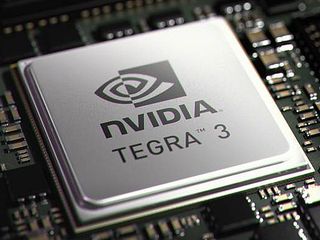Nvidia Supporting Miracast Standard with Tegra 3
Tegra 3 will support the upcoming Miracast open standard for streaming media directly to compatible devices.

Nvidia, a member of the Wi-Fi Alliance, announced that it's supporting the new Miracast WiFi-Direct based protocol which is expected to launch by the Wi-Fi Alliance within the next few months.
For the uninitiated, Miracast will be an open standard, so any mobile device or display manufacturer will be able to implement the technology. It will also be a direct competitor to closed eco-systems like Intel's WiDi and Apple's AirPlay which enable users to wirelessly stream videos and games to external displays.
There are also other open standards for streaming media such as DLNA, but these are plagued with interoperability issues that have limited their traction in the market place. To address the limitations of these solutions, the Wi-Fi Alliance created its upcoming open wireless display standard called Miracast.
"Underpinning the Miracast specification is Wi-Fi Direct – a specification defined for peer-to-peer, direct wireless connectivity between devices," Nvidia said on Thursday in its whitepaper. "Miracast Certified devices will be able to connect with each other directly, without the mediation of a wireless access point, by leveraging the functionality introduced by Wi-Fi Direct. When two devices connect with each other directly, one assumes the role of the source (transmitting device) and the other becomes a sink (the devices receiving and rendering the content to the user)."

Nvidia said that it has developed a Miracast wireless display stack that is Tegra 3 optimized and can be integrated into the Tegra mobile platform. This source-side solution enables tablet and phone OEMs to implement a Miracast certifiable product by combining the Tegra application processor and compatible Tegra Android BSP package just as they do today.
"The Tegra optimized Miracast solution is comprised of two major components – the multimedia (video/audio) processing block and the industry compliant wireless display networking stack," Nvidia explained. "The multimedia processing block takes advantage of Tegra’s multi-core graphics engine and dedicated hardware video/audio codecs to accelerate the decoding of video content, render graphics surfaces and perform the final compositing operations before encoding into a H.264 bit stream to be wirelessly transmitted."
Nvidia said that Tegra 3's multimedia architecture will be able to make intelligent decisions that will result in efficient use of system resources. As an example, by determining if streamed content is 3D gaming or an HD movie in the very beginning, the Tegra AP will be able to reduce the number of processing operations that keep memory accesses and format conversions to a minimum. For end users, that means less latency and overall improved quality.
Stay on the Cutting Edge
Join the experts who read Tom's Hardware for the inside track on enthusiast PC tech news — and have for over 25 years. We'll send breaking news and in-depth reviews of CPUs, GPUs, AI, maker hardware and more straight to your inbox.
To reduce transmission latency, the Miracast Architecture will start the screen capture as soon as possible while reducing the number of operations required to complete the task, thus the audio-video data is dumped onto the network stacks as quickly as possible. Meanwhile, video quality of the source content will be maintained by reducing the number of format changes required during the decode and encode stages.
"The CPU is tasked to assist in the multimedia processing as well as perform tasks such as packetizing the audio/video data and multiplexing them into a single MPEG-2 transport stream," the company said. "Unique to Nvidia Tegra is the 4-PLUS-1 architecture that offers the advantage of having a 5th battery saver core which utilizes lower voltages thereby decreasing power consumption exponentially. By offloading the more intensive multimedia processing to the power efficient GPU and video decode/encode engines, the Tegra AP can completely power off its main CPU cores and rely only on the battery saver core, thus reducing power consumption and maximizing battery life."
Nvidia said that it's actively working with OEM partners and Miracast receiver vendors to bring this new wireless streaming technology to market. Expect additional updates once the Wi-Fi Alliance ratifies the Miracast spec.
-
cnox @dotalocReply
I donno, man, I'm currently using Splashtop to stream my PC to my tablet (there were some apps such as games that remote desktop just did not work, plus this works pretty well over 4gLTE networks).
The Spashtop devs said that they released a version of their app that is optimized to tegra 3 + nvidia graphics cards such that the server PC can encode and stream faster, and the tablet client can decode using Tegra3 capablities.
It would be AWESOME if that could be made into an industry standard. Imagine having a powerful 680GTX powered display in your POCKET! It is pretty cool, if you haven't considered remote computing via a tablet, you're missing out on one of the most interesting advances in the tablet space in a while.
-
SteelCity1981 So i take it this isn't 802.11ac with this new wi-fi direct technology that can stream wireless to HD TV's? It would be interesting to see how much bandwidth this wireless direct will take up transferring streaming Wi-Fi HD'sv single especially HD 3D movies.Reply
Most Popular



